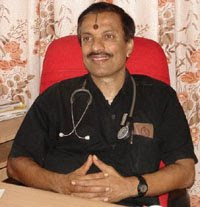What is Haemospermia?
When semen changes from its usual cream-white colour to white with 'a hint of pink', or is bloodstained, it's called haemospermia, which simply means blood in the semen. The semen can also appear brownish-red in colour. Whatever the shade, it isn't normal and means something is not right and should be checked out.
One problem with haemospermia is that it invariably causes men great anxiety. Another problem is that the cause often remains unknown.
Causes/Risk Factors
Haemospermia most commonly affects men in their 30s, although it's by no means exclusive to this age group.
It's not always possible to prevent it from occurring, but if the cause can be found then taking care to avoid such triggers can result in fewer sleepless nights.
Most commonly, haemospermia is a consequence of non-specific inflammation of the urethra (the tube urine passes through), prostate and/or seminal vesicles. That is, inflammation anywhere along the path semen follows when leaving the body.
Other possible causes include:
* Minor trauma - the result of vigorous sexual activity, for example, or a trouser-zip accident.
* Infections of the genital tract this is usually accompanied by other symptoms, including pain on urination, scrotal tenderness or swelling, groin tenderness or aching, pain on ejaculation, low back pain, fever or chills.
* Biopsy of the prostate gland, where seminal fluid is manufactured.
* In rare instances, haemospermia is secondary to cancer.
For most men, haemospermia is a one-off event. For some, though, the problem is a recurrent one for which a cause cannot be identified, despite full and thorough investigation.
Treatment/Recovery
It may necessary to refer a man with haemospermia to the local hospital urology service where a number of tests such as laboratory examination of urine and semen, ultrasound or CT scans, or even a cystourethroscopy (a telescopic examination of the inside of the urinary tract under anaesthetic) may be recommended in order to check the diagnosis.
Fortunately, in the majority of cases haemospermia is benign and self-limiting, so no specific treatment is required other than a large dose of reassurance and advice about safer practices.
Where an underlying cause is identified - for example, infection or inflammation - specific treatment can be provided. This may involve a course of antibiotics or anti-inflammatory medication.
Labels: back pain, blood, premature ejaculation, prostate, semen



